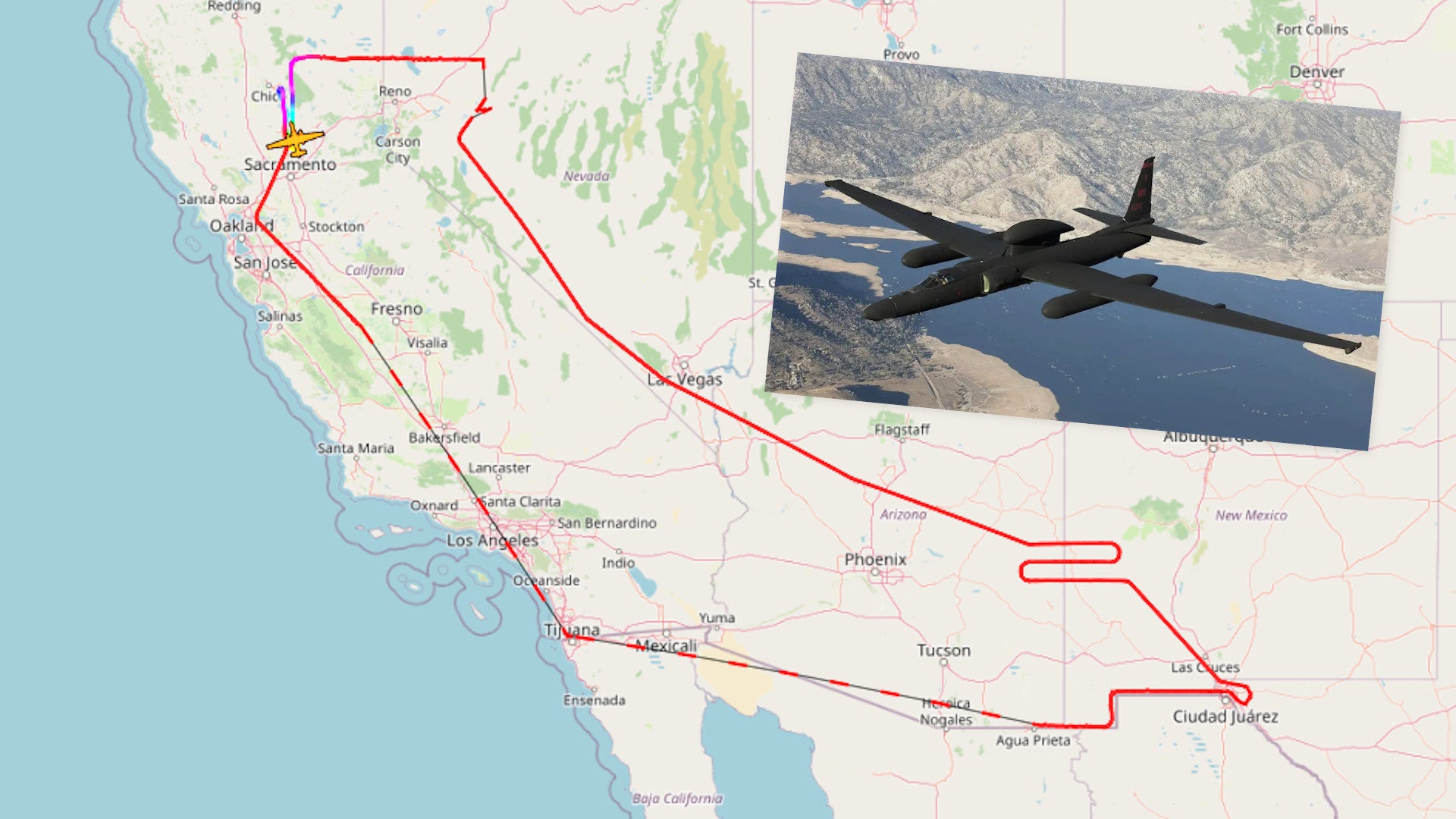The U.S. Air Force says that a U-2S Dragon Lady spy plane that flew along a portion of the border with Mexico yesterday was on a training mission and was not conducting surveillance in support of other U.S. government agencies.
Beyond the current headlines about the border, the flight had caught people’s attention, because the U.S. military, including contractors working on its behalf, does have a long history of supporting domestic law enforcement operations along the U.S.-Mexico border. This has included providing valuable aerial surveillance capabilities. U.S. military aircraft, including U-2s, also regularly take part in counter-drug operations and other missions targeting ostensibly criminal activity outside of America’s borders in the Northern Hemisphere, as well.

The sortie on Apr. 1, 2021, saw the U-2S in question, which has the serial number 68-10329 and was using the callsign Pinon 71, head out north from Beale Air Force Base in California before turning east into Nevada. Beale, home of the 9th Reconnaissance Wing, is the Air Force’s main hub for U-2S, as well as RQ-4 Global Hawk drone, operations.
After entering Nevada, 68-10329 turned south and followed a path roughly along the Nevada side of the Nevada-California border before passing into Arizona. The aircraft then turned slightly more to the southeast and flew a large s-shaped pattern over the Arizona-New Mexico border.

The U-2S then flew around El Paso in Texas before heading back west along the U.S.-Mexico border. The flight tracking data is incomplete for much of the rest of the sortie, but it would appear that the plane traveled along the border through New Mexico, Arizona, and then California, before heading back north to Beale. Despite what is shown on the map above, there is no indication that the aircraft ever crossed into Mexican airspace.
“The flight you’ve reference was confirmed to be a training sortie out of Beale and was not conducted as a patrol or joint operation with external agencies,” Air Force Captain Brittany Curry, the public affairs chief for the 9th Reconnaissance Wing, told The War Zone in a statement. Curry added that 68-10329 did not collect imagery of any kind during the flight.
As already noted, though, this would have hardly been the first time that U.S. military intelligence, surveillance, and reconnaissance (ISR) aircraft, as well as other aviation assets, including those flown by contractors working for the Department of Defense, have supported law enforcement operations along the U.S. border with Mexico. Though the federal government is generally prohibited, by law, from deploying active-duty military forces domestically, there are mechanisms through which various kinds of support, including aerial ISR capabilities, can be provided to law enforcement and other domestic civilian agencies. You can read about those processes and the legal stipulations involved here and here.
The Air Force’s U-2Ss can carry a variety of different sensor packages, including panoramic and other wide-angle cameras and radar imaging systems, and one of these aircraft could, conceivably offer a way to relatively quickly get a snapshot of border activity at a particular moment in time, even if 68-10329 did not in this particular case. That same imagery would also be useful for general mapping purposes, including in the creation of radar maps that can show details electro-optical or thermal imagery cannot. The U-2 can also carry communications intelligence gathering payloads.

In addition, while 68-10329 might not have been patrolling the border during this flight, there has been a notable uptick in U.S. military aviation support of various kinds, from both active-duty units and elements of the National Guard, to law enforcement agencies along the border starting in recent years. This started in 2018 under former President Donald Trump’s administration.
In 2019, after Trump declared a national emergency with regards to security along the border with Mexico, Newsweek obtained a U.S. military document that described new requests for aerial ISR and other aviation support, including U.S. Navy P-3 Orion maritime patrol planes, which are also capable of overland surveillance, as well as U.S. Army MC-12 manned ISR aircraft and MQ-1C Gray Eagle drones. It’s unclear if any of those platforms were subsequently deployed to the border.

In addition, it’s worth pointing out that U-2s have certainly provided ISR support for counter-drug operations and others efforts targeting transnational criminal activity over the years. The Dragon Lady’s involvement in the War on Drugs dates back to the 1970s.
They have even conducted flights over Mexico on at least one occasion, as part of an operation known as Equis Emerald in 2009, though it’s unclear what the exact mission was in that case. U-2s have also been used in the past to collect imagery to support disaster relief and humanitarian response operations, both inside the United States and abroad.

In the meantime, while President Joe Biden officially ended the Trump-era national emergency with regards to the U.S.-Mexico border in February, thousands of U.S. military personnel remain deployed supporting border security operations. Biden has also been facing criticism from Republicans in Congress about its handling of what they describe as a new border crisis.
All told, there are no indications that the U.S. military support being provided to border security operations now is set to get scaled back in the near term, although the U-2 Dragon Lady wasn’t part of those plans on this occassion.
Contact the author: joe@thedrive.com
